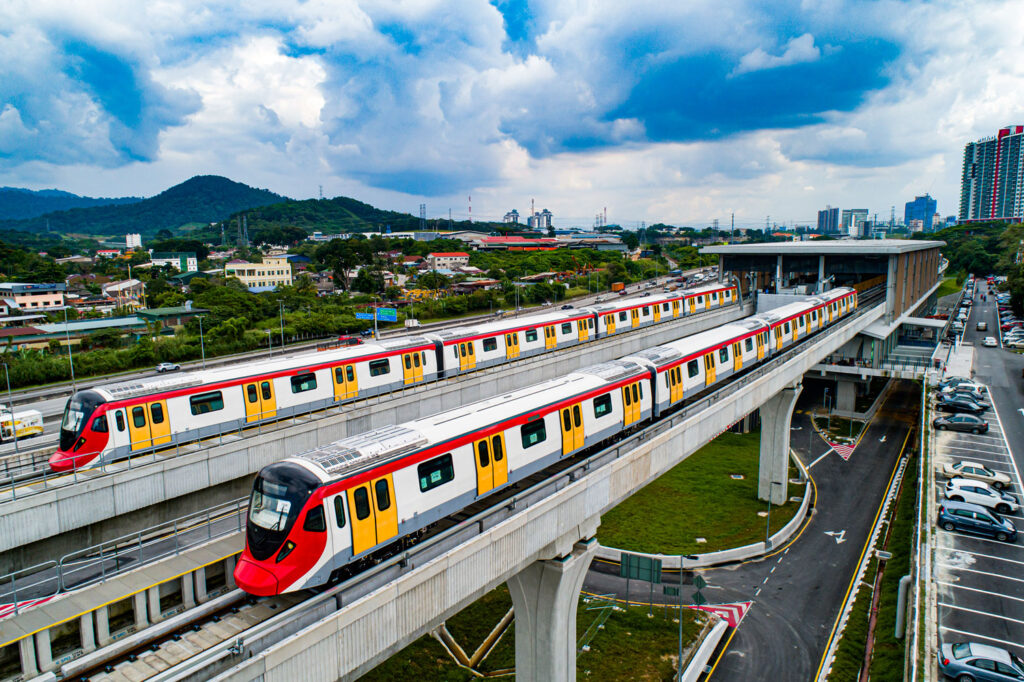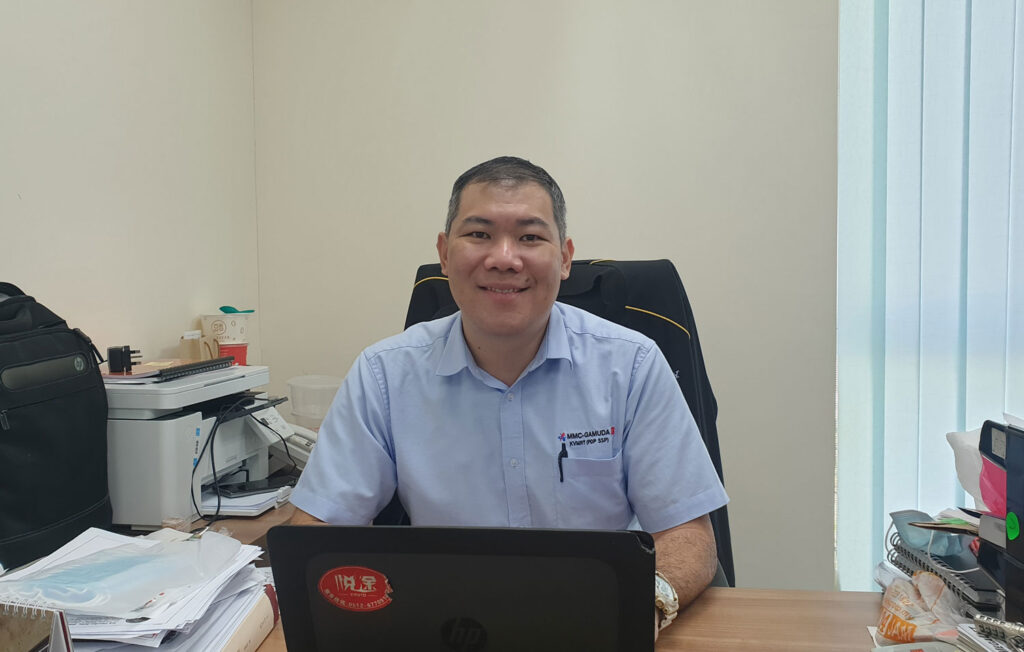The Importance of Intelligent Design, Project Management and Planning
Transportation infrastructure plays a vital role in the growth and development of a nation. An effective infrastructure system that connects people to business hubs and major economic centres is the driving force behind a strong nation. Therefore, it is important that these infrastructures are built well to service the thousands of people that rely on them every day.
Malaysia’s transportation infrastructure has grown and advanced greatly over the last few years, with the completion of the MRT Kajang Line in 2017 and MRT Putrajaya Line being the latest additions in the continuity of a wider transportation network. The construction of the MRT Putrajaya Line builds upon the efforts and achievements gained from the MRT Kajang Line. Efforts such as the upskilling and reskilling of our local talent pool with globally recognised training, for example, continues to play an important part in our success.

The key to building good infrastructure is highly dependent on the skills and expertise of our people, which is not an easy feat. Therefore, it is important to acknowledge that this could only have been possible with the dedication and passion of the right people behind these projects.
PROJECT DESIGN AND TECHNICAL EXPERTISE
Among these many passionate people is Chai Soon Lim, Senior Design Manager for the Design & Technical (D&T) Department of MMC Gamuda. Chai is in charge of designing the overall Northern Section blueprint of the MRT Putrajaya Line — affecting elements such as construction design, alignment, station location, costing and more.
Speaking to Chai about some of the processes and challenges associated with constructing the design of a project at this scale, he walks us through some of the stages involved such as engaging with external experts, determining the stations’ location and space needed. Interestingly, all three stages happen before the design of the lines’ blueprints is done to ensure the objective of the Project can be achieved. The first stage, Primary and Planning is a gate review process involving a team of technical staff from various expertise, independent consultants (ICE) and Project Owner, Mass Rapid Transit Corporation (MRTC). Once it passes this gate review process, it will then progress towards the second stage called the Tender Design & Documentation Process. This stage involves creating an outline of the Project and determining the cost for tender calling. In the final stage, IFC (Issued for Construction) ensures all aspects captured are provided with sufficient information for construction before it is finally released to contractors for implementation and project specifications.

Apart from the technical aspect of his role, Chai’s team is also responsible for presenting the Project’s details to authorities for their approval. Besides, Chai’s team also takes part in public engagement with various stakeholders to gain feedback and address any concerns involving the Project’s design and implementation. Given Chai’s experience and dynamics in his role, it has allowed him to share, speak and work not only within the project team but also with the public, authority figures, third party developers and many more, an aspect that he enjoys most.
It is safe to say that Chai and his D&T team play a vital role in constructing a mega infrastructure project like the MRT Putrajaya Line. Without the site surveys, feasibility studies and drawings, a Project like this does not get off the ground. Moreover, Chai’s expertise, attention to detail and passion for the project is the driving force behind its execution from start to finish.
When asked about his aspirations for MRT Line 3, Chai remarks that Malaysia’s expertise in building railway projects have grown exponentially since the MRT Kajang Line. He believes that as we have grown in expertise, our local talent has grown with us through an upgrade in knowledge, skills and performance. He hopes that this growth can help reduce the nation’s dependency on foreign expertise and replace it with a potential local talent pool.
PROJECT MANAGEMENT DEPARTMENT:
Another passionate individual in charge of the MRT Putrajaya Line project is Tan Wen Loong. For the past 17 years, Wen Loong’s career in Gamuda has granted him the opportunity to lead multidisciplinary projects, leaving an outstanding mark in our nation’s infrastructure landscape.
As a Deputy General Manager, he plans, executes and monitors the entire construction of the Northern elevated section, specifically Package V202 of the MRT Putrajaya Line. This entails ensuring smooth work progress (to avoid delays), the safety of all Work Package Contractors (WPCs) and the work quality itself. Extending beyond the construction site, he also ensures public safety is well managed and disruptions are minimised throughout the construction stage. Among the many other ways he implements this is through the Traffic Management Plan, which involves scheduled roadblocks at certain times of the day, traffic diversion via alternative pathways to minimise disruption and more.

Speaking to Wen Loong, he also outlines other challenges faced in constructing the MRT Putrajaya Line. In particular, how it is to work in the middle of a global pandemic. With multiple stringent lockdowns and Standard Operating Procedures (SOPs) in place, this has severely limited the ability of construction workers to operate as they would normally do. One of the initiatives that were undertaken by Wen Loong and his team to ensure Project continuity was the creation of a COVID-19 Task Force on-site. This COVID-19 Task Force was set up to ensure that SOPs were abided by and that proper protocols were followed if a COVID-19 positive case is detected on-site, as well as ensuring all best practices are being put in place, to protect the workforce’s well-being. Despite these challenges, Wen Loong still has a positive outlook in delivering the key milestones for the MRT Putrajaya Line as he believes in good planning, adaptability and teamwork in meeting day-to-day challenges head-on.
PLANNING AND PROGRAMMING:
The Planning and Programming Department is in charge of overseeing the successful construction of the project within the stipulated budget and timeframe, all while ensuring it is also executed with the highest quality. A major part of this job is managing the 469 Key Access Dates (KAD), or simply called the line-wide project checkpoints, to ensure that each package is on track for installation and construction.
There are four general stages that a project like this goes through from the perspective of the Planning department; initiating, planning, executing and controlling, and closing. There are also sub-stages like inception, pre-design, presentation and approvals, construction and testing, and lastly project handover falling underneath it. The Planning Department is involved at every stage of the project.
Overseeing the completion of a project at this scale, while also ensuring that it stays within the stipulated timeframe and budget, requires a lot of coordination and know-how of operational management to not only determine realistic KADs based on the type of equipment, sequencing and utilities on the ground, as well as the Safety, Health and Environment (SHE) practices and traffic management, but also to balance cost control against scheduling control. How this is all done may vary from optimising the utilisation of available resources, reducing errors in approaches and duplication of works; and reviewing work plans to check on actual achievements.
Furthermore, planning also requires looking at the bigger picture and communicating with consultants and other departments like Approval Management Department, Contract and Commercial Department and Project Management Department (PMD) to bring together the various work sections — Civil, Stations and Systems.
On a project of this scale, challenges and problems are inevitable and it is the job of the Planning Department to find solutions, and make adjustments to resources so that it keeps to the timeframe and budget. Some of the daily challenges that the Planning team runs into has to deal with issues regarding contract requirements and compliances, delays in handover, delays with site access and claims from Work Package Contractors for reimbursement of funds and damages.
Planning a project like this is an intricate and demanding task that requires intimate knowledge of different rules, regulations and requirements based on the project. The construction of the MRT Putrajaya Line depends heavily on the forward planning, oversight and direction of the Planning and Programming team and it is because of their dedication and perseverance, we are on track for all Project’s milestones.

